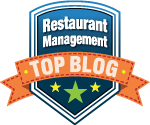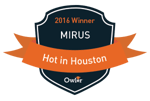
There are a lot of moving parts that go into running a multi-unit restaurant company. Trying to keep up with it all can be quite an unwieldy task. Restaurant companies that automate their process management demonstrate increased agility and competitiveness, enabling them to swiftly adjust to market dynamics and meet customer demands. Learn how automating process management can help you complete tasks faster, lower operational costs and improve resource allocation.
What is Process Management
Process management involves planning, monitoring, and optimizing business processes to help reach organizational goals. It starts with planning the process in question - answering the question “how should it work?”
Some companies will start by designing workflows of specific activities that are part of the overall process, and establishing the performance standards or thresholds of success for the process. Performance standards are critical to automating process management because they let us know whether a process is performing as expected.
Process management also monitors the inputs and outputs of the steps in a process to determine if it is working properly, and notifying someone when issues exist. It is important to understand that process management is an ongoing activity that requires care and maintenance to keep up with the small changes that can happen from time to time.
The final point here is that processes do not exist in a vacuum, they must directly support the achievement of the company’s goal. Processes that do not directly support organizational goals, ultimately serve to work AGAINST the achievement of those goals.
Benefits of Process Management
Process management has been around for more than a century and there are lots of success stories of dramatic improvements in quality and reliability for companies using this technique.
Some of the benefits of process management for restaurants include:
- Streamlined operations, reduced costs, and improved overall performance
- Continually refining and adapting processes based on feedback and evolving business needs
- Real-time analytics, facilitating better decision making
- Ensured compliance with standards and regulations
- Increased transparency, and a boost in overall productivity
- Increased agility and competitiveness
When performed well, process management will result in faster, better, cheaper processes to service your customers, employees, and investors.
Process Mapping
There are a lot of techniques for documenting a process. Techniques that are action oriented, data centered, and show what data is moving from task to task are the most beneficial. I prefer an artifact based approach to process mapping. An artifact is a document or other record that carries data through the steps of a process. Artifacts can be physical or digital:
- Physical- a piece of paper, like a form
- Digital- a table that contains what a person entered into an application
This is a technique I have evolved from a handful of other techniques I have used over the years. There are only circles and arrows in this technique. Action takes place inside the circles and arrows represent artifacts that move through the process and carry information from one activity to another.

The diagram above focuses on the Food Ordering process. It has four steps and uses five different artifacts. In this example there are two actions that need to happen before the others, but it is not important which order they are completed. You can Count Inventory first, or Forecast Demand, the process isn’t concerned with the order of these two actions. I have chosen to use a cute graphic for my Artifacts, but how you choose to illustrate artifacts is totally up to you. The steps are:
- The Inventory Count Sheet is created or updated in the Count Inventory task
- Forecasted Demand is created which requires some historical information, so you see an artifact going into the Forecast Demand task. The output of this task is the Forecasted Demand artifact.
- Food Requirements are calculated using the Count Sheet, Forecasted Demand and Recipe Artifacts
- The Food Order Form is sent to the vendor.
You might ask: “Why do we need the recipes?” The Inventory Count Sheets contain one row for each ingredient, but the Forecasted Demand is by Menu Item. In the restaurant business the only way to work with both of these at the same time is by using the Recipe of each Menu Item. The recipe describes the ingredients needed to build the Menu Item.
Restaurant Operations Process Map
The process for running a restaurant could be summed up in four steps:
- Ordering food & scheduling people
- Operating restaurant
- Counting inventory
- Paying bills

This is just for illustration purposes, this is NOT a useful process map for operating a restaurant.
This process begins with Ordering Food and Scheduling People - the two largest costs of restaurant operations. The food and people, along with their associated artifacts like receiving documents and employee schedules flow to the next step which is Operate the restaurant. This is the work of customers ordering food, the kitchen cooking, the food being served, and the customer paying the check. The artifacts generated in this step include Guest Checks, and Time Punches along with others like Bank Deposits. The next step may appear odd at first glance, but restaurants are mini factories so we need to know how much of the food we started with is still available. To know this, we have to count inventory, everyone’s favorite activity. But, it is an essential step in the process to understand what happened and to know how best to prepare for the next day. The Inventory Count Sheets, and the Invoices of the purchases are a primary artifacts and are passed to the Accounts Payable and General Ledger for processing. Finally, you have to pay the bills. Vendors and employees are critical to this process and they won’t do their jobs without payment.
A lot of the artifacts created or maintained through the process make their way to the Financial Systems where, among other things, they are recorded and payments made. The payments are sent along with things like adjustments or credits that may apply. At this point, the process is complete and ready to be executed again.
I hope you do not take this definition of restaurant operations seriously, it is just for illustrating a few points about mapping your processes.
Obviously, this is a gross oversimplification, so let’s take another step….
Process Map Expansion

Wow, things got messy really quick! We have added process detail to each of the original four steps that illustrate additional artifacts and activities in running a restaurant.
You can see that we’ve added detail to Ordering Food & People, and the first step is to Forecast Demand in order to determine how much food and how many people are required to service the forecast. After the forecast, the process splits into two, one for ordering and receiving the Goods, and the other for the People.
Even at this level of detail, it is too simplified to apply to any individual company. For example, some of these steps can be iterative and repeat over and over until all of the work has been completed. Adjusting the Labor Schedule is a good example of this.
One of the challenges I struggled with early on in mapping business processes is determining how much detail was enough. I haven’t found a single answer that helps in all situations, but I have learned to pay attention to the artifacts. If a process step you are considering adding does not introduce a new artifact, it may not be important enough to muddy up the diagram. I know from experience that going too far with detailing minutia will not help your cause, it tends to make it harder to see the important opportunities.
And, of course, this is still too summarized to be helpful, so what next?
Process Map Detail
 Even with this diagram, we are only scratching the surface of processes within a restaurant company. There are many important processes missing from this diagram.
Even with this diagram, we are only scratching the surface of processes within a restaurant company. There are many important processes missing from this diagram.
The next step would be to note the artifacts flowing along the arrows. There are a lot of missing arrows in this diagram because I only included those directly related to the individual step, and did not include arrows to describe what happens to the artifact afterwards. For example, some artifacts carry information that has to be entered into a system such as the General Ledger. Other artifacts may need to be audited, which is a process unto itself. When each artifact is tracked from cradle to grave, you are likely done.
I have included a couple of examples of processes that restaurant companies require, but are not part of the day to day operations. Menu Development and Location Development are two very important processes that are executed less frequently than ordering food, and outside the daily operations. Another example is granting IT Access to a new employee. Or the process for evaluating and selecting new enterprise software.
We could probably identify another dozen or so processes that are important for many restaurant companies.
The value in all of this is the ability to see process bottlenecks and redundancies clearly. Changing the process to eliminate those things will improve the process, and potentially increase the value of the data captured.
Now, let's take a look at a specific example.
Automated Restaurant Process Management Example
Let's take a look at how the state of a process can be monitored and alerted. In this automated restaurant process management example we will be using the process of payroll. Every restaurant has to pay its people. We will use this example to illustrate some of the key pieces to automating the management of the process.

This example does not include all of the steps in this process in order to keep the number of tasks simple. We are focusing on the part of the process that affect the store managers. The objective of this process management is to know whether the managers are performing all of the payroll related activities throughout the two-week payroll cycle.
Payroll Process Steps
The steps in this process include:
- Punch In - Staff member clocks into the Time & Attendance system at the start of each shift declaring the Job they will be working.
- Punch Out - Staff member clocks out of the Time & Attendance system at the end of each shift.
- Daily Punch Edits - Managers are responsible to review and edit all time punches for accuracy and completeness. Failure to do this is evident by employees who have automated punch-outs during the end of day process, or lack of punch-outs after the end of each day.
- Timesheet submission - Completed timesheets have to be submitted by 10am every second Tuesday, and managers submit their timesheets using a Tool in Mirus. Failure to do this is evident by the Timesheet Submitted measure which is set by the submission Tool.
- Post Timesheets - All timesheets must be loaded into the Payroll System by 3pm on every other Wednesday. A job to extract data from the Payroll system is run at 3pm and the ETL job loads the latest data into Mirus which is examined to identify missing employees and/or missing stores.
Payroll Process Reports
We will use three reports to inform management about the state of the Payroll process every day and in particular the last two days of each two–week process cycle.
- Daily Edits Incomplete - Sent as an alert to all Managers if there are missing Edits. This report will include all of the Employees for a store who have a Punch-In time other than Null recorded but the Punch-Out time is well after the closing of the restaurant but prior to End Of Day processing (POS with automated logout will have a timestamp of the End of Day execution, others will be null or zero).
- Timesheet Missing - Sent as an alert to Managers who are missing Timesheets. This report will include all stores who have not submitted their timesheets.
- Timesheet Needing Review - Sent as an alert to Managers every other Wednesday if any Payroll information is missing or requires additional review by the Manager. This report will include all stores that are missing data and holding up the Payroll processing for all stores. If all the data has been submitted, this report will include a message to the Payroll Manager to proceed with posting the timesheets to Payroll.
Payroll Process Report Filters
Detailed filters make the reports valuable to the Managers as well as the Payroll team.
- Daily Edits Incomplete- For the Daily Edits Incomplete report, we filter for Employees who have one of two conditions. First, we look for Employees who have a Punch In timestamp, but no Punch Out timestamp. The second condition is to look for Employees whose Punch Out time is equal to or greater than the automated clock-out time set in the T&A system. This report will be distributed to the Managers as an alert and it will not be sent unless there is content for that Manager. It is run every Day, and is available to run on command by the Payroll Team, or the chain of command.
- Timesheet Missing- For the Timesheet Missing Report, we filter each Store that has not submitted its timesheet by 10am every other Wednesday. The Filter is examining the Timesheets table for any Stores that are currently open but there is no row in the Timesheet table.
- Timesheet Needing Review- For the Timesheet Needing Review Report we are notifying the Manager one last time that the Timesheet has some odd values that require one more look. It simply looks at every Employee to ensure the Total Hours are within reasonable guidelines or policies.
Process Management can improve quality, reduce time, and reduce costs for restaurant companies. Mapping your processes can help you identify how best to improve a process. Using an Artifact-based approach to mapping makes automating the management easier. Artifacts are typically exposed as Measures and Dimensions and can be evaluated for completeness. The flow of Artifacts through the organization can identify bottlenecks and duplications. Fully automating the processes and the monitoring of them takes time. Start by finding low-hanging fruit significant time saving or monetary benefits.
About Mirus:
Mirus provides services in data management and solutions in custom reporting for the restaurant industry.
Enjoyed this blog? Share it using the social buttons at the top of the page and leave your thoughts in the comment section below.
Topics: Client Spotlight









.png?width=50&height=50&name=Mirus%20Logo%20(1).png)